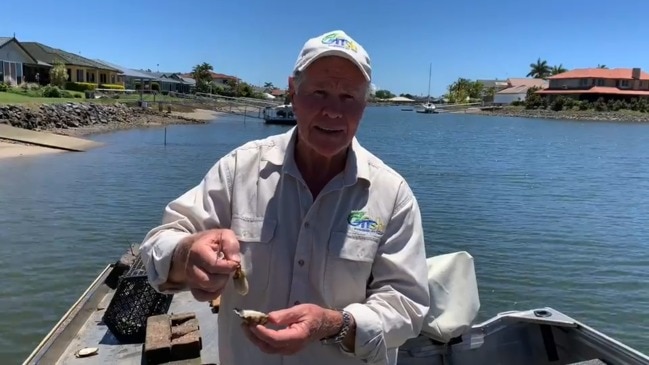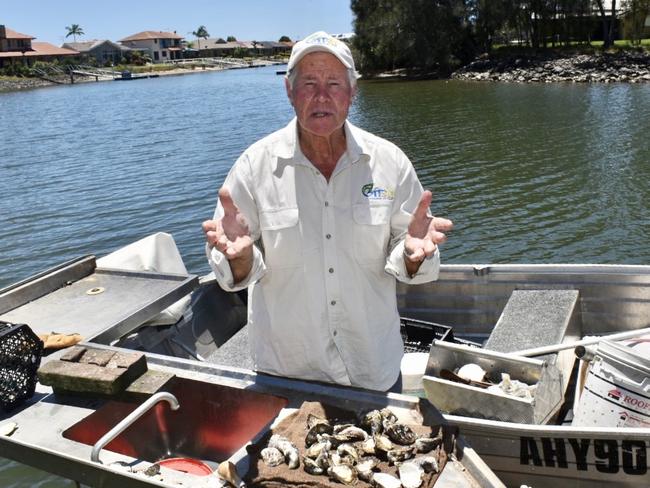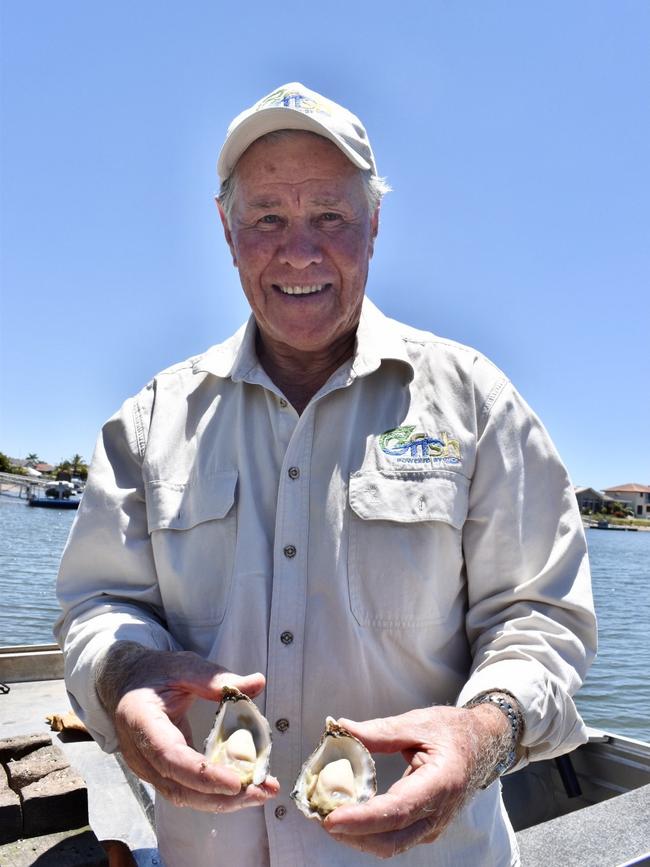New Richmond River Rock Oyster evolved immune to deadly disease
A new tasty oyster - related to the Sydney Rock Oyster - was discovered in the Richmond River at Ballina and evolved naturally to become immune to QX disease.

Ballina
Don't miss out on the headlines from Ballina. Followed categories will be added to My News.
A new type of mollusc known as the Richmond River Rock Oyster, found to be resilient to a deadly disease, is growing naturally in the Richmond River.
Samples were handed out at the Ballina Fishermen’s Co-op on Sunday, with oyster lovers offering positive feedback about its taste and size.
The new shellfish is genetically related to the Sydney Rock Oyster (Saccostrea glomerata), but the new local bivalve developed a natural immunity to QX oyster disease.
QX is a parasitic disease that does not harm humans, but decimates Sydney rock oysters.
The new oyster was discovered in 2016 by volunteers from OzFish, a not-for-profit dedicated to protection and restoration of fish habitat and Australian waterways.
They realised some oysters survived QX disease and decided to find out why.
They were astonished to find out it was a brand new type of local rock oyster.

This year, supported by farmers, the team has been able to catch enough of the new oyster spat.
West Ballina resident John Larsson is the team leader of the OzFish oyster project.
“We have 10,000 oysters in five cylinders, but we don't know yet how many of them are actually Richmond River Rock Oysters and how many are Sydney rock oysters that have travelled down from the Tweed or Brunswick,” he said.
Ballina is ‘sitting on a massive opportunity for a renewed oyster industry’
The business potential of this new resource does not escape the OzFish team, Mr Larsson said.
“On Sunday, every person who tried the oysters asked where they could get them from,” he said.
“Can you imagine getting an oyster that naturally evolved to be free of this disease? Not genetically engineered by our scientists, but naturally evolved.
“We can say that now, because for six years we have had no disease on these oysters, while the Sydney Rock control set, placed among the Richmond River Rock oysters, have all died.”
Mr Larsson said farmers are desperately asking when they can get them.
The oysters cannot be taken from the Richmond River to another river system due to government biosecurity restrictions in place to protect those other estuaries from QX disease.
“As soon as the science on this new mollusc is completed and biosecurity regulations updated, Ballina is sitting on a massive opportunity for a renewed oyster industry and for yet another reason to improve the health of the river,” he said.

How did it evolve ?
One of the main questions scientists are trying to answer is how did the oysters evolve to be disease-free.
The position where the oysters settlements are found has been offered as a possible solution.
Richmond Rivers Rock Oysters are found higher than other oysters, outside of the water during low tide, Mr Larsson said.
“It’s out of the water 30 per cent more than a Sydney Rock Oyster will be,” he said.
“Still covered at high tide, but it’s not under water, when water quality is really bad.”
OzFish’s new project will now see the organisation partnering up with local oyster growers, Southern Cross University and the State Government to study the new mollusc, Mr Larsson said.
“Dr Carmel McDougall from Griffiths University has the country’s most complete database of oysters' DNA in Australia,” he said.
“She said the DNA of these new oysters is very very close to Sydney rock oysters, but it’s not identical.
Mr Larson said the team needs $50,000 to take the research to the next level with four volunteers already on the case.
“Without oysters, our estuary does not function, it’s as simple as that,” he said.
“They filter the water around them, roll up the excess, encapsulate it with a bit of mucus, which makes it sink so fungi and bacteria can break it down. It then becomes food for many invertebrates living in the oyster reef.
“This can be a step towards river health, while at the same time revolutionising the local industry.”




